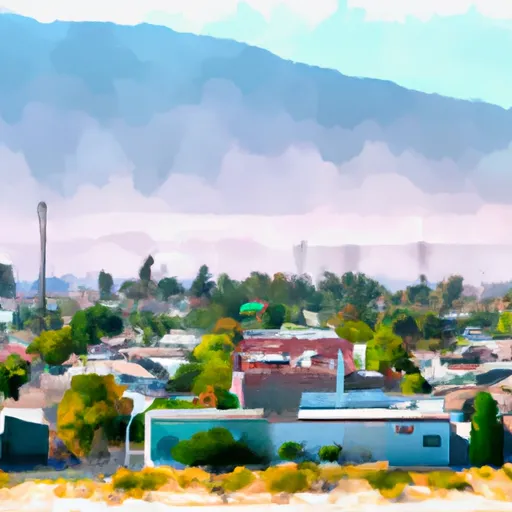-
 Snoflo Premium
Snoflo Premium
Get unlimited access to all our content
With no Ad interruptions! - Start Your Free Trial Login with existing account
Hornbrook
Eden Index
Climate
9.5
•
Recreation
7.3
•
Community
0.7
•
Safeguard
6.5/10

Hornbrook, California is a small community located in Siskiyou County, in the northern part of the state. This unincorporated area has a population of around 250 people. Hornbrook experiences a Mediterranean climate, characterized by warm, dry summers and cool, wet winters. Summers can reach temperatures in the 90s°F (32°C), while winters see temperatures in the 30s to 40s°F (0-4°C). The area is known for its beautiful natural landscapes, with the Klamath Mountains to the west and the Cascade Range to the east.
Hornbrook is situated near the Klamath River, a significant hydrological feature in the region. The river provides opportunities for fishing, boating, and other water-based activities. The area is also surrounded by numerous creeks and streams, adding to the hydrological diversity. Outdoor enthusiasts can explore the nearby Klamath National Forest, which offers opportunities for hiking, camping, and wildlife viewing. The forest is home to various species, including deer, black bears, and bald eagles.
Overall, Hornbrook, California offers a pleasant small-town atmosphere with access to natural beauty and outdoor recreation opportunities.
What is the Eden Index?
The Snoflo Eden Index serves as a comprehensive rating system for regions, evaluating their desirability through a holistic assessment of climate health, outdoor recreation opportunities, and natural disaster risk, acknowledging the profound impact of these factors on livability and well-being.
Climate Health Indicator (CHI): 9.5
Hornbrook receives approximately
568mm of rain per year,
with humidity levels near 73%
and air temperatures averaging around
11°C.
Hornbrook has a plant hardyness factor of
8, meaning
plants and agriculture in this region tend to thrive here all year round.
By considering the ideal temperature range, reliable water supplies, clean air, and stable seasonal rain or snowpacks, the Climate Health Indicator (CHI) underscores the significance of a healthy climate as the foundation for quality living.
A healthy climate is paramount for ensuring a high quality of life and livability in a region, fostering both physical well-being and environmental harmony. This can be characterized by ideal temperatures, reliable access to water supplies, clean air, and consistent seasonal rain or snowpacks.
Weather Forecast
Streamflow Conditions
Klamath
Area Rivers
Klamath
Snowpack Depths
Klamath
Reservoir Storage Capacity
Klamath
Groundwater Levels
Recreational Opportunity Index (ROI): 7.3
The Recreational Opportunity Index (ROI) recognizes the value of outdoor recreational options, such as parks, hiking trails, camping sites, and fishing spots, while acknowledging that climate plays a pivotal role in ensuring the comfort and consistency of these experiences.
Access to outdoor recreational opportunities, encompassing activities such as parks, hiking, camping, and fishing, is crucial for overall well-being, and the climate plays a pivotal role in enabling and enhancing these experiences, ensuring that individuals can engage in nature-based activities comfortably and consistently.
Camping Areas
| Campground | Campsites | Reservations | Toilets | Showers | Elevation |
|---|---|---|---|---|---|
| Tree Of Heaven | 36 | 2,071 ft | |||
| Apserkaha Park - Howard Prairie Lake | 9 | 4,606 ft | |||
| Grizzly - Howard Prairie Lake | 21 | 4,546 ft | |||
| Lily Glen - Howard Prairie Lake | 12 | 4,545 ft | |||
| Mt Ashland | 9 | 6,704 ft | |||
| Beaver Dam | 4 | 4,541 ft | |||
| Klum Landing - Howard Prairie Lake | 30 | 4,531 ft | |||
| Emigrant Lake - Point Park | None | 2,160 ft | |||
| Mount Ashland | 9 | 6,499 ft | |||
| Willow Point - Howard Prairie Lake | 41 | 4,571 ft |
Nearby Fishing
Catastrophe Safeguard Index (CSI):
The Catastrophe Safeguard Index (CSI) recognizes that natural disaster risk, encompassing floods, fires, hurricanes, and tornadoes, can drastically affect safety and the overall appeal of an area.
The level of natural disaster risk in a region significantly affects safety and the overall livability, with climate change amplifying these risks by potentially increasing the frequency and intensity of events like floods, fires, hurricanes, and tornadoes, thereby posing substantial challenges to community resilience and well-being.
Community Resilience Indicator (CRI): 0.7
The Community Resilience Indicator (CRI) recognizes that education, healthcare, and socioeconomics are crucial to the well-being of a region. The CRI acknowledges the profound impact of these elements on residents' overall quality of life. By evaluating educational resources, healthcare accessibility, and economic inclusivity, the index captures the essential aspects that contribute to a thriving community, fostering resident satisfaction, equity, and social cohesion.

